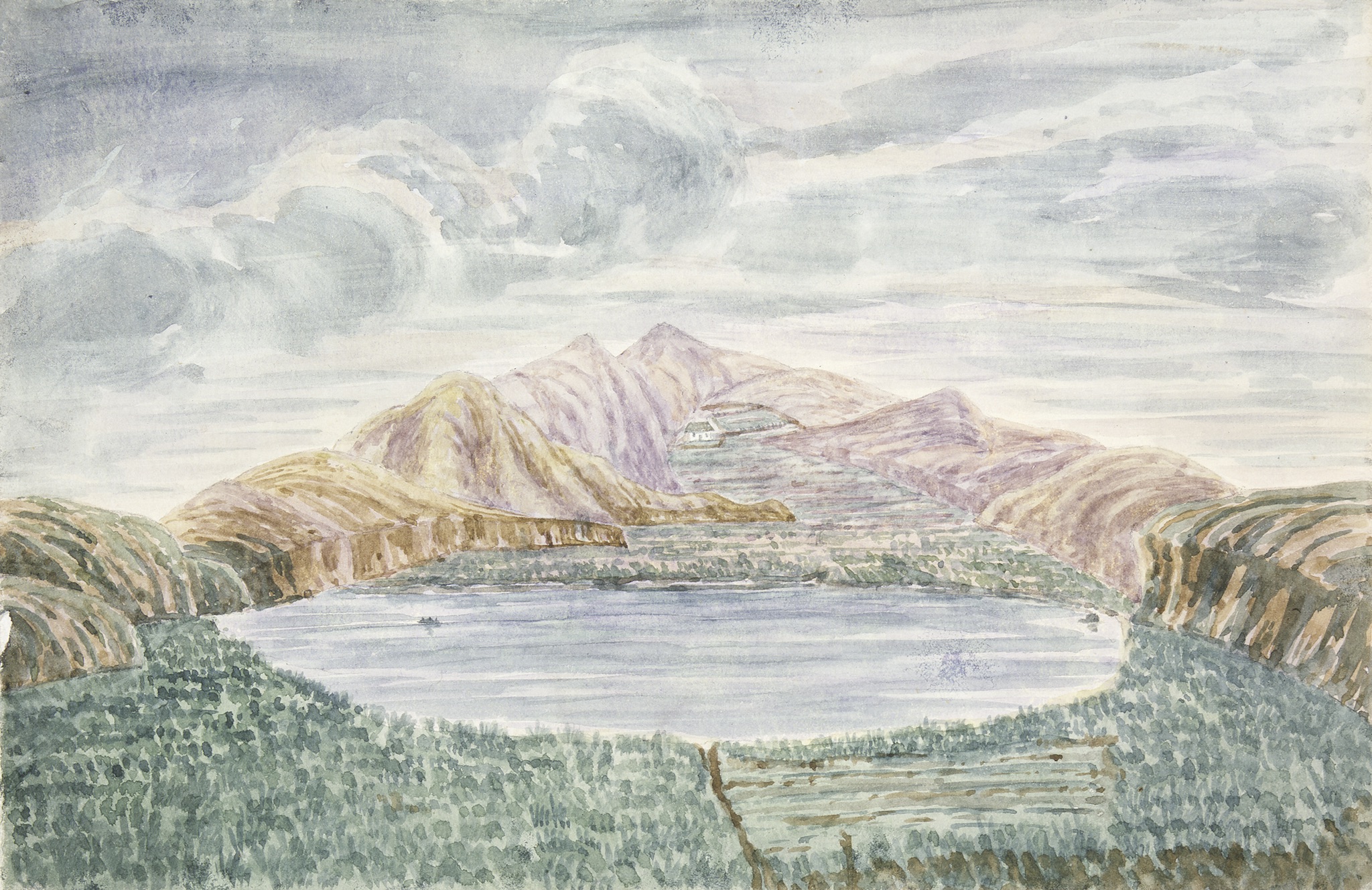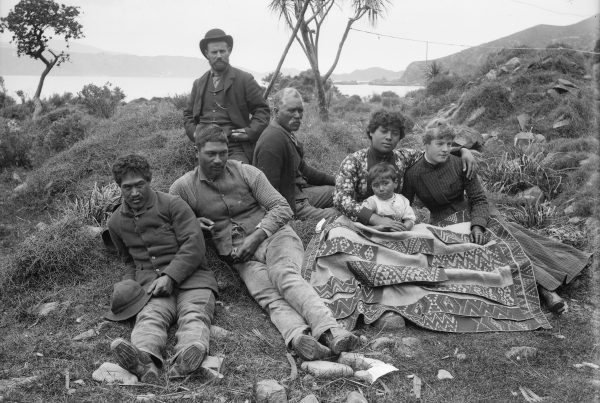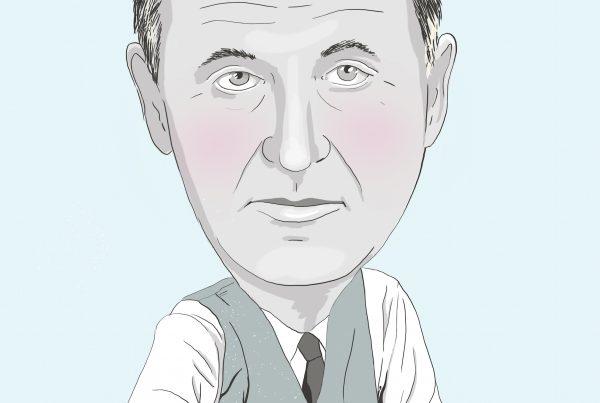
Above: Watercolour by James Coutts Crawford. Picture courtesy of the Alexander Turnbull Library
Here is Miramar in the mid-1840s, viewed from Lyall Bay and looking toward Mt Crawford in the distance. The lake and surrounding swamp covered much of what is Miramar now. Early Māori inhabitants called the lake Rotokura. More recent arrivals from Taranaki called it Para, and began to stock it with eels from the Hutt Valley. When the European settlement of Wellington was established, the lake was renamed Burnham Water.
This sketch was rendered by James Coutts Crawford, a lively figure in early Wellington history, who then owned most of what you can see in his picture. That is his new farmhouse, Glendavar, up on the slopes of Mt Crawford in the distance.
Burnham Water was picturesque, but it was taking up good farmland so, in 1847, soon after completing this drawing, Crawford commissioned New Zealand’s first tunnel, through the hills on the left, and drained most of it away. The surrounding fern and flax was turned into pasture and Miramar became a successful cattle and dairy farm.
Clearly Crawford was a better businessman than an artist. But, despite his artistic limitations he certainly enjoyed sketching. The Turnbull Library has a large collection of his scenes of early Wellington and other places he visited on his entrepreneurial travels. Dating from the days before photography, they provide a valuable record of what New Zealand looked like.
Miramar’s landowner was an interesting character, with many enthusiasms. He wrote articles about local botany and geology, and published a book about his world travels and a pamphlet advocating a grand reform of English spelling. Later, he became one of Wellington’s first photographers – one of his early streetscapes will feature in a future issue.
Crawford always hoped that he could eventually make a further fortune through subdivision, but those plans were not so successful. After the lake was drained, a new racecourse was opened nearby to try and bring in the crowds. A local paper reported that opening day “was remarkably fine, and crowds of people visited Lyall’s Bay, in carts, on horseback and on foot, and several boats were employed carrying passengers”. But the racecourse was not a success. It was too sandy, windswept and remote.
It was not until the early 1900s, when the new trams made city commuting possible, that Miramar began to resemble the busy suburb we know today.




